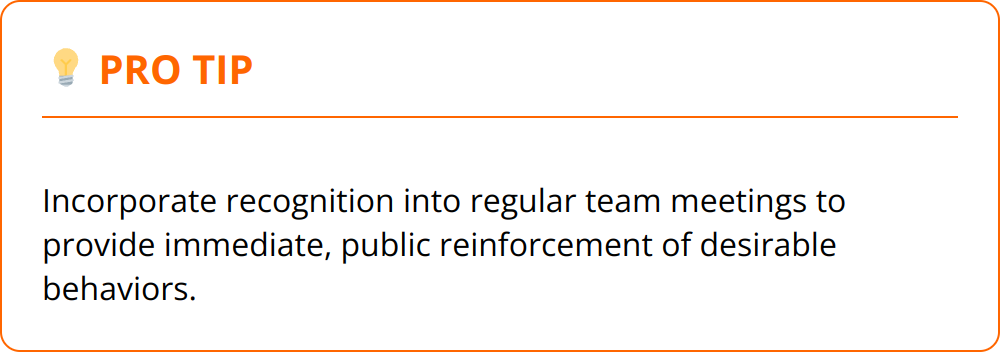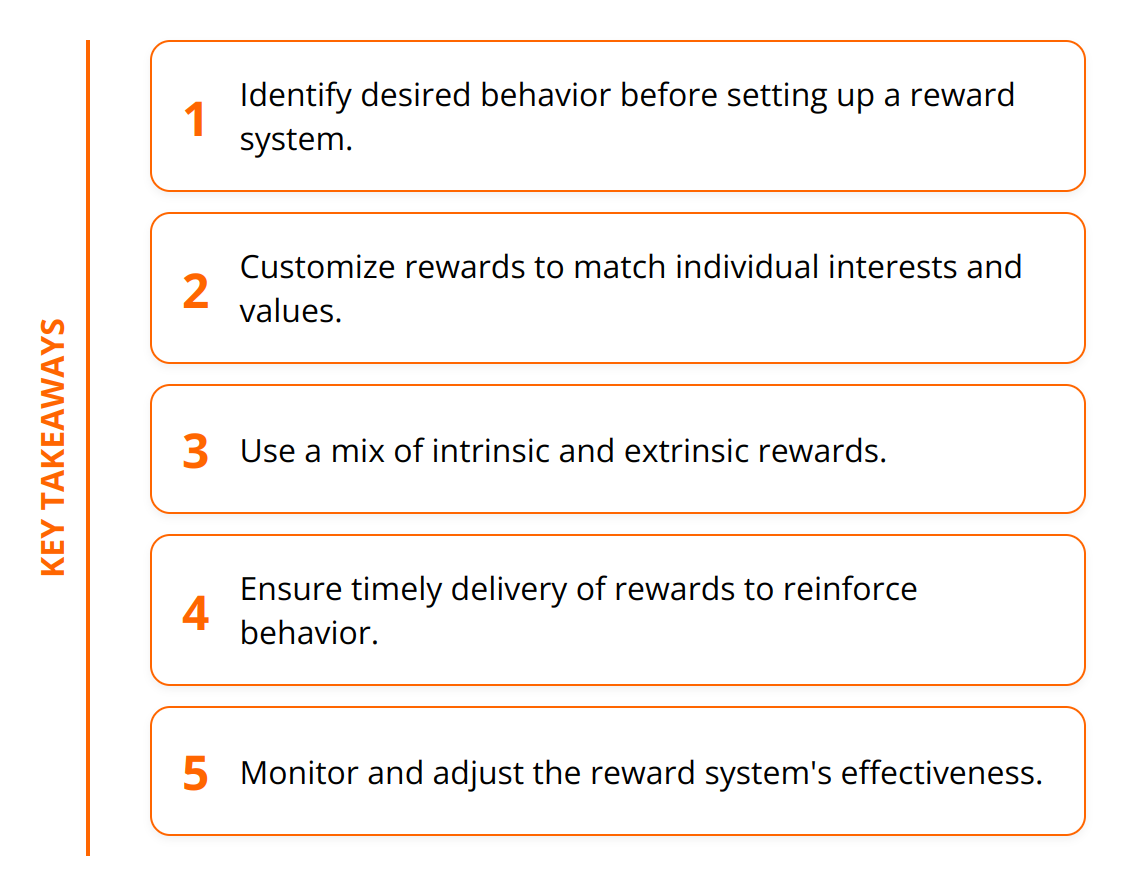
Behavioral reward systems are the backbone of motivation and change, influencing how we work, learn, and live. At Reward the World, we understand the complexity and power these systems hold. Through this post, we aim to demystify them, highlighting their psychological underpinnings, various applications, and the challenges they come with. Join us as we explore the intricate world of rewards and how to effectively implement them across different domains.
Unlocking Behavioral Reward Systems
Behavioral reward systems are essentially strategies that aim to reinforce desired behaviors through rewards. These systems play a critical role in shaping our behaviors, proving to be an effective tool in both personal development and organizational management.
The Foundation of Behavioral Reward Systems
At the heart of these systems is positive reinforcement. This concept underlines the psychological aspect that rewards, when associated with certain behaviors, can increase the frequency of those behaviors. The effectiveness of these systems lies in their ability to tap into the individual’s psychological needs, providing an incentive that motivates them towards a desired action or behavior.
Real-world examples abound. Employers use rewards to incentivize employees, teachers use them to encourage students, and parents use them to shape their children’s behavior. Each scenario leverages the potent psychological impact of rewards to elicit desired outcomes.

Distinguishing Between Intrinsic and Extrinsic Rewards
Understanding the types of rewards is key to implementing an effective reward system. Rewards can be broadly categorized into intrinsic and extrinsic types. Intrinsic rewards are those that come from within the individual, such as a sense of accomplishment or personal satisfaction. Extrinsic rewards, on the other hand, are tangible rewards provided by an external source, like bonuses, trophies, or even public recognition.
The choice between intrinsic and extrinsic rewards depends on the context and the individual. While intrinsic rewards can be more sustainable in the long run, fostering internal motivation and satisfaction, extrinsic rewards are powerful for immediate motivation and can be highly effective in the short term. The ultimate goal is to strike the right balance, ensuring that the rewards align with the individuals’ values and contribute to their overall motivation and engagement.
Practical Applications and Actionable Insights
To maximize the effectiveness of a reward system, here are some actionable insights:
- Identify the desired behavior clearly before setting up a reward system. This ensures that rewards are aligned with the objectives.
- Customize rewards to match the interests and values of the individuals. Personalization increases the effectiveness of the reward system.
- Use a mix of intrinsic and extrinsic rewards to maintain long-term engagement and short-term motivation.
- Ensure timely delivery of rewards to reinforce the behavior. Delayed rewards may lose their impact.
- Monitor and adjust the reward system based on its effectiveness. An adaptive system can respond better to changing motivations and behaviors.

Reward systems are not a one-size-fits-all solution. They require careful planning, customization, and iteration to achieve the desired outcomes. By understanding the psychological underpinnings and distinguishing between types of rewards, anyone can harness the power of behavioral reward systems to foster positive change, whether in personal life, the workplace, or in educational settings.
To delve deeper into crafting effective reward systems, explore insights on personalized rewards strategies and incentive program compliance, providing a comprehensive guide on navigating the challenges and opportunities of reward systems.
Reward Systems Across Settings
Implementing effective reward systems requires an understanding of the unique challenges and opportunities in various environments. By tailoring strategies to each context, it’s possible to greatly enhance motivation, engagement, and personal growth. Let’s dive into the practical application of reward systems in the workplace, education, and personal life.
Boosting Workplace Performance
In the corporate world, motivation and performance are closely linked. A well-designed reward system can significantly boost employee engagement, leading to higher productivity levels. Start by identifying key performance indicators (KPIs) that align with the company’s goals. Assign tangible rewards for reaching these milestones, such as bonuses, extra days off, or public recognition at team meetings. It’s important to keep rewards timely and closely linked to specific achievements to reinforce the desired behavior.
- Incorporate peer recognition programs to foster a culture of appreciation.
- Use gamification for mundane tasks, transforming them into engaging challenges.
- Offer professional development opportunities as rewards for outstanding achievements.
For more on enhancing workplace motivation, see insights on employee rewards and recognition.
Encouraging Engagement in Education
The educational sector can benefit immensely from well-thought-out reward systems. Students, much like employees, respond positively to both intrinsic and extrinsic rewards. However, the focus should be on encouraging a love for learning rather than just completing tasks for rewards. For younger students, simple token economies can be effective, where tokens earned for positive behaviors or excellent work can be exchanged for privileges or small prizes. For older students, more sophisticated systems involving digital badges or points leading up to larger rewards can be motivational.
- Align rewards with educational goals rather than just high grades.
- Involve students in setting goals to increase their commitment.
- Offer feedback and recognition more frequently to keep students engaged.

Enhancing Personal Development
On a personal level, reward systems can transform the daunting journey of habit formation or self-improvement into an engaging process. The key is to set clear, achievable goals and reward progress towards these goals. For instance, if the goal is to exercise more, you might reward a week of completed workouts with a movie night. Digital apps that track progress and offer virtual rewards can be particularly effective for personal development goals.
- Break down big goals into smaller, manageable tasks.
- Keep a progress journal to reflect on successes and areas for improvement.
- Celebrate small wins to maintain motivation over time.
Explore more on building habits for effective self-improvement strategies.
Implementing reward systems in these varied settings can propel individuals and groups towards their goals. Each setting has its nuances, but the underlying principle remains the same: right rewards can significantly enhance motivation and performance.
Designing Effective Reward Systems
When it comes to creating reward systems that drive motivation and performance, several challenges and considerations come into play. Understanding these can significantly enhance the effectiveness of any reward program, whether it’s in a workplace, educational setting, or personal development plan. Here are insights into key aspects like balancing motivators, avoiding common pitfalls, and ensuring fairness and transparency.
Striking the Right Balance
Finding the perfect equilibrium between intrinsic and extrinsic motivators is essential. Too much emphasis on extrinsic rewards can overshadow the internal satisfaction that comes from achieving a goal, leading to a decrease in intrinsic motivation over time. On the other hand, solely relying on intrinsic motivators might not provide the immediate push sometimes needed to kickstart a change or recognize effort in tangible ways.
- Always link rewards to meaningful outcomes.
- Blend tangible rewards with verbal or written recognition.
- Make rewards relevant and aligned with personal or organizational values.
Steering Clear of the Over-Justification Effect
The over-justification effect occurs when an excess of extrinsic rewards diminishes one’s intrinsic interest in an activity. This happens when the reward becomes more important than the activity itself, potentially leading to a drop in interest once the rewards stop.
- Introduce rewards gradually and sparingly.
- Customize rewards to maintain relevance and appeal.
- Focus on fostering a natural interest in the activity or goal.

Ensuring Fairness and Transparency
Fairness and transparency in the allocation and distribution of rewards are paramount. Perceived unfairness can quickly demotivate and disengage, undermining the very purpose of implementing a reward system. Being clear about how rewards are earned and distributed helps maintain trust and motivation.
- Clearly communicate the criteria for earning rewards.
- Be consistent in the application of rules and rewards.
- Regularly review and adjust the reward system, incorporating feedback.
By navigating these considerations carefully, one can craft a reward system that not only motivates and engages but also supports sustained interest and commitment to the desired behaviors or outcomes.
For more insights on improving workplace engagement, explore employee recognition. Additionally, understanding the nuances of personalized rewards can further tailor your approach, ensuring relevance and impact.
Final Thoughts
Behavioral reward systems are a fundamental part of fostering motivation, enhancing engagement, and promoting positive change. They rely on a delicate balance between intrinsic and extrinsic rewards, tailored to meet individual needs and preferences. The effectiveness of these systems hinges on their capacity to resonate on a personal level, making the customization of rewards not just beneficial but essential for success.

The importance of tailoring rewards to individual requirements cannot be overstated. Personalized rewards demonstrate an understanding and appreciation of individual contributions, leading to increased motivation and commitment. It’s a strategy that ensures rewards are not just given but are meaningful and valued by the recipient.
Looking ahead, future trends in reward systems are set to leverage technology and data analytics more heavily. These advancements will enable even more personalized and timely rewards, ensuring they are relevant and impactful. The rise of digital platforms, like Reward the World, exemplifies this shift. Offering a vast array of rewards in multiple languages and catering to a diverse user base, these platforms are at the forefront of the evolving landscape of reward systems.
In conclusion, behavioral reward systems play a pivotal role in shaping behaviors and achieving desired outcomes. The key to their effectiveness lies in their ability to be customized and personalized, meeting the unique needs and preferences of individuals. As we move forward, the integration of advanced technologies will continue to enhance these systems, making them even more effective and far-reaching. Whether in the workplace, educational environments, or personal development, understanding and implementing effective reward systems can significantly bolster motivation and performance.
